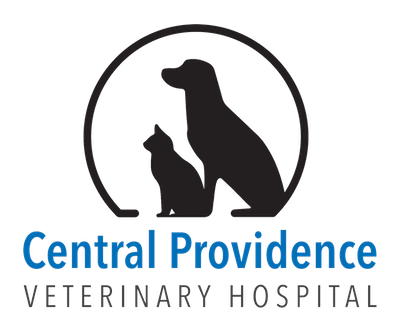Everything You Need to Know About Dog Anesthesia at Central Providence Veterinary Hospital
Is anesthesia safe for my dog?
Overall, anesthesia is a very safe procedure for most pets, but there are risks involved.
What types of procedures would anesthesia be needed for my dog?
Anesthesia is used for a wide variety of procedures that we can't do with your pet awake. Things like your typical spay and neuter when your pet is younger. We also do dental cleanings, dental extractions, mass removals, and foreign body removals, all under anesthesia.
Are there dog anesthesia side effects that I need to be aware of?
Yes. In general, anesthesia is very safe, but we use several different medications to reach the anesthetic stage. Allergic reactions are always a possibility. We try hard to ensure we know your pet's metabolic state and any disease processes prior to anesthesia, but if there is a disease process such as heart disease or a clotting disorder that we don't know about, it can worsen under anesthesia.
While your pet is under anesthesia, issues like low blood pressure and loss of temperature can be profound. The surgical team will monitor their temperature, blood pressure, heart rate, and respiratory rate throughout the entire procedure and even after.
Are there certain dogs that should not go under anesthesia?
There are certain dogs where anesthesia may be more risky. It's important to weigh the risks versus the benefits and decide if you want to proceed. Some disease processes, like kidney disease and heart disease, can increase anesthesia risks. There are adjustments we can make in the drug protocol and monitoring to make it as safe as possible, so knowing those risks in advance is crucial.
Breed-specific changes can also play a role. Brachycephalic or short-nosed dogs have a higher risk of regurgitating under anesthesia, which can lead to aspiration pneumonia. These breeds may also have trouble breathing when they wake up if they are anxious.
We have protocols in place to mitigate these risks. Small breed dogs may lose temperature quickly, so monitoring temperature and having protocols to maintain warmth are crucial before, during, and after the procedure.
What are some possible complications of anesthesia that my dog could experience?
Possible complications include drug reactions and allergic reactions to the medications we use. You might see low blood pressure and low body temperature, which we watch for and can address if they occur. Despite our efforts to understand your pet's metabolic health, unforeseen issues may worsen under anesthesia. In rare cases, cardiac arrest or clot formation could occur, which is why we monitor closely.
What can be done to reduce the risk associated with anesthesia for dogs?
Having a thorough physical exam, especially on the morning of a procedure, is vital for a successful anesthetic procedure. Preoperative lab work to check for metabolic conditions before determining a drug protocol is important. It's also crucial that your pet is fasted before the procedure so their stomach is empty before induction.
What does the process for dog anesthesia recovery look like?
The process begins as soon as the dog's inhalant anesthetic gas is turned off. The goal is a slow and smooth wake-up. If a pet wakes up anxious, we may use a mild sedative to help them relax. We continue monitoring their mental alertness and body temperature throughout recovery to intervene if needed.
At home, they should be in a calm, warm, relaxed area where you can monitor them without chaos and noise.
If my dog is acting weird after anesthesia, what should I do?
This depends on what "weird" means. If they are groggy, restless, or more vocal than normal, it can be secondary to anesthesia, and they just need time and space to recover. If your pet is vomiting, has diarrhea, is having trouble breathing, or can't stay awake when interacted with, contact your veterinary team for further advice.
How long does it take for anesthesia to wear off in dogs?
The gas itself wears off fairly quickly. Some medications used for sedation and pain control can last 6 to 12 hours. The exact duration depends on the protocol your veterinarian uses. They should be back to normal the next day.
What should I do if my dog refuses to eat or drink after anesthesia?
Don't force them. Give them time and inform your surgical team about the situation. It's normal for them not to want to eat or drink the night after anesthesia, but they should return to normal the next day.
Using anti-nausea medications can assist in recovery. Remember, they may have received intravenous fluids during the procedure, so they might not need as much hydration that day.
If you’re searching for veterinary care you can rely on, we’re here to help. Call (704) 318-2228 or email [email protected] to schedule your pet’s appointment. Our team is committed to keeping them healthy.
